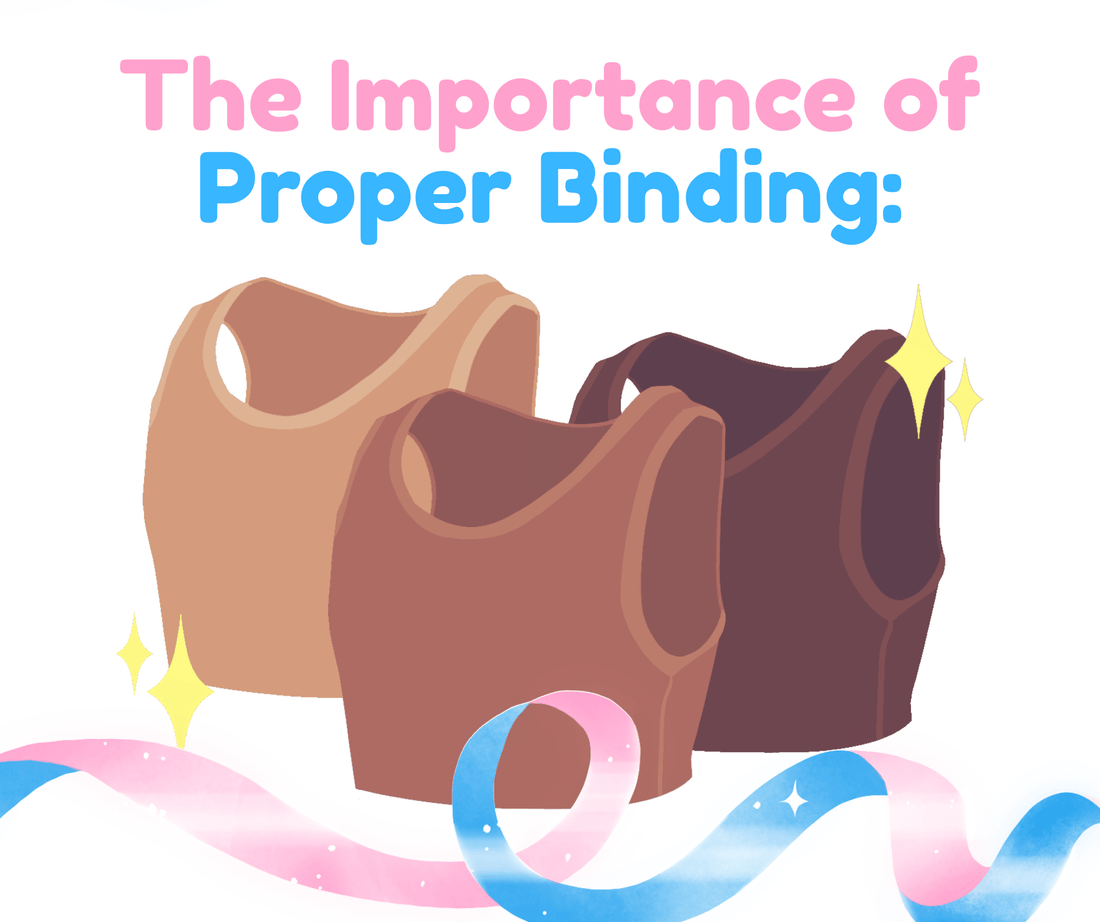Binding can be a powerful tool for gender euphoria — but it should never come at the cost of your health. Here’s how to do it safely.

At FLAVNT, we know how life-changing it can feel to put on a binder for the first time. For many transmasc and nonbinary folks, chest binding offers a sense of comfort, safety, and identity in a world that doesn’t always get it.
But binding incorrectly — or with unsafe materials — can lead to real physical and emotional harm. So whether you’re new to binding or have been doing it for years, here’s a refresher on how to protect your body, reduce dysphoria, and make the most of this powerful gender-affirming tool.
What Is Chest Binding?
Chest binding is the act of compressing breast tissue to create a flatter chest appearance. Many transmasc, nonbinary, and gender-nonconforming people bind as part of their gender expression or to ease gender dysphoria.
Binding can be done with:
-
Commercially made binders (like our Bareskin Binders)
-
Tight compression shirts
-
(NEVER with ace bandages or duct tape — more on that below)
Why Binding Safety Matters
While binding can offer mental relief and confidence, doing it incorrectly can cause:
-
Difficulty breathing or shallow breaths
-
Rib bruising or fractures
-
Back, chest, and shoulder pain
-
Skin rashes or chafing
-
Overheating and dehydration
-
Long-term tissue damage if worn excessively
These risks are why proper fit, material, and binding duration matter so much.
Binding Best Practices
-
Wear a Binder Made for Binding
Always use a binder that’s specifically designed for chest compression. DO NOT bind with:
-
Ace bandages
-
Duct tape
-
Elastic shapewear not designed for chest compression
These materials constrict unevenly and tighten over time, leading to injury.
-
Limit Wear Time
-
Bind for no more than 8–10 hours a day
-
Take breaks when you can
-
Don’t sleep in your binder — ever
-
Avoid binding multiple days in a row if your body is sore or irritated
-
Make Sure It Fits Properly
Too tight = unsafe.
Too loose = ineffective and uncomfortable.
At FLAVNT, our Bareskin Binders come in sizes XXS–4X and are made from a breathable, stretchy fabric designed to move with your body — not fight against it.
Use our sizing guide (or email us directly!) to ensure the best fit. A proper binder should:
-
Flatten the chest without restricting deep breathing
-
Fit snugly around your torso without rolling up or digging in
-
Not cause numbness or bruising
-
Take Care of Your Skin
-
Wash your binder regularly — sweat, bacteria, and friction can cause breakouts
-
Use anti-chafing balm or lotion on sensitive areas
-
If your skin is irritated, give it a break before binding again
When Not to Bind
There are times when it’s better to skip the binder altogether:
-
During intense workouts or sports
-
While sleeping
-
If you’re sick, injured, or recovering from surgery
-
During extremely hot weather (opt for compression tank tops or looser layers)
Instead, consider alternatives like:
-
Layered clothing
-
Button-ups over a sports bra
-
Compression tanks or looser-fitting tees
-
Affirming posture (confidence makes a huge difference)
What Makes FLAVNT’s Bareskin Binder Different
We created the Bareskin Binder because so many options on the market were uncomfortable, overpriced, or not made by queer people.
Our binders are:
-
Made from soft, second-skin material — smooth, stretchy, breathable
-
Available in 7 skin-tone and neutral shades: Birch, Bone, Rose, Sand, Copper, Umber, and Onyx
-
Inclusive in sizing from XXS to 4X
-
Produced in small batches for quality
-
Designed and tested by trans people — including our co-founder, Chris
We built it because we needed it. And we made sure it met our own standards before ever putting it in the shop.
When to Seek Help
If you notice any of the following, it’s time to take a break (and maybe talk to your doctor):
-
Trouble breathing or constant tightness in your chest
-
Numbness in your arms or chest
-
Sharp pains, bruising, or cracked ribs
-
Persistent rashes or skin infections
-
Worsening posture or back pain
You deserve to feel good — not just in your gender, but in your body too.
Final Thought: Binding Is a Tool — Not a Requirement
Not every trans or nonbinary person binds. That’s okay.
Binding can be powerful and affirming — but it should never feel like a punishment or a risk you have to take just to feel like yourself. Choose what works for you, and know that there’s no one right way to be trans.
FLAVNT is here to support you — with safe, soft, affirming products and a community that gets it.

